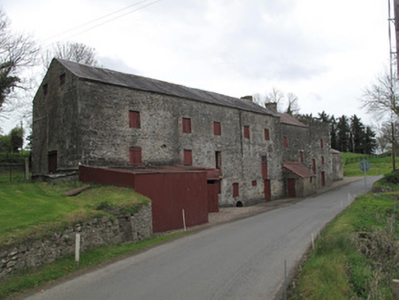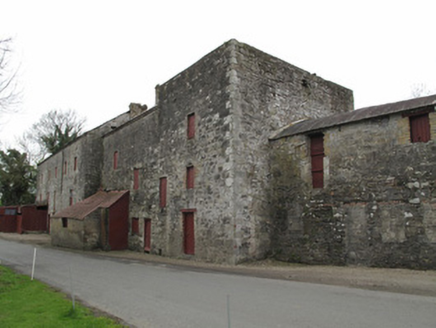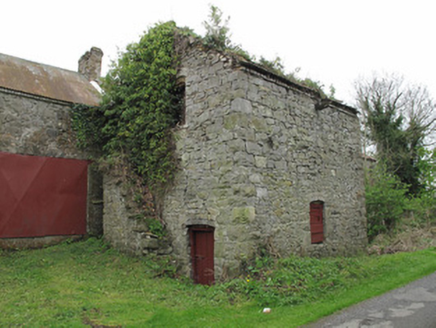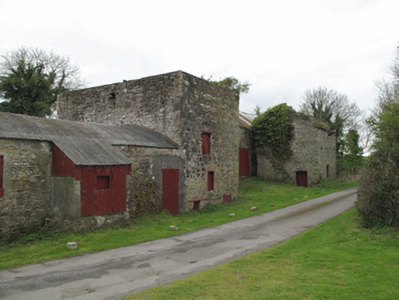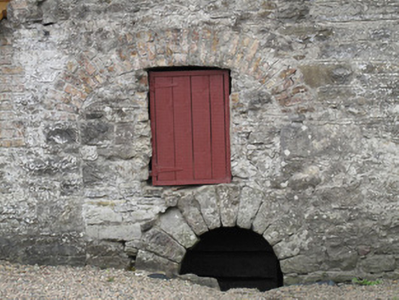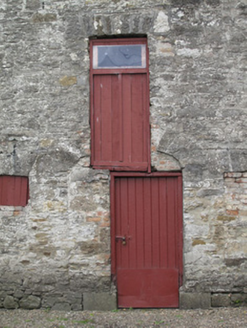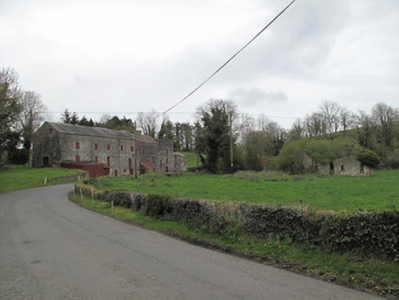Survey Data
Reg No
41400715
Rating
Regional
Categories of Special Interest
Architectural, Technical
Original Use
Mill (water)
In Use As
Mill (water)
Date
1780 - 1800
Coordinates
271877, 338865
Date Recorded
13/04/2012
Date Updated
--/--/--
Description
Multiple-bay three-storey corn mill, built c.1790, comprising five-bay block to south-west, three-bay block to centre and single-bay flat-roofed flax store to north-east, and adjoining three-bay two-storey former scutching mill to north-east elevation. Single-bay two-storey block adjoining rear (north-west) elevation of corn mill. Corrugated-iron lean-to roofed, red brick extension to front (south-east) elevation, and corrugated-iron roofed stone walled extension to rear of scutch mill. Pitched slate roof to south-east building with yellow brick chimneystack, and cast-iron rainwater goods and vent. Pitched corrugated-iron roof to centre block having red brick chimneystack, and with pitched corrugated-iron roof to block to rear. Red brick eaves courses throughout. Barrel-vaulted corrugated-iron roof to scutch mill, replacing former pitched roof. Coursed rubble limestone walls, and roughly-dressed block-and-start quoins. Some roughcast render remaining to scutch mill. Cast-iron wall ties to upper level of front of scutch mill. Square-headed window and door openings throughout with timber fittings, some having red brick surrounds or gauged-brick voussoirs. Gauged-brick segmental-headed window and door openings to block to rear with timber fittings, door to first floor level to north-east elevation accessed via flight of stone steps abutting wall. Some three-centred gauged limestone openings visible to wall, now blocked. Square-headed openings to upper gables of south-west elevation having red brick surrounds and timber louvered vents. Gauged-brick openings to front of scutch mill, blocked. Gauged-brick three-centred arch to front of main block, blocked, with square-headed opening having timber battened door, and gauged limestone round-headed opening to mill race, mill wheel visible to interior.
Appraisal
This corn and scutch mill has been in use since the early part of the nineteenth century and is reminiscent of the industrial heritage of the area. It was recorded as a flax mill in the early-nineteenth century by the OS Memoirs. Water-powered scutch mills came into use from the eighteenth century to separate flax fibre through the use of rotating wooden scotching blades, and were an integral part of the linen industry. In Ireland, scutch mills were predominantly found in Ulster. The substantial corn mill reflects the prominence of grain production and processing in the region, because the breaking of the outer shell of grain used a similar crushing motion to the scutching process. It was common in Ireland to have the two mill types on a single site. Work could thus be carried out on a more regular basis than would otherwise be possible given the seasonal nature of both processes. Although this building is no longer in use, it retains much of its form and fabric, most notably its mill wheel. It remains an imposing feature on the landscape and serves as an indicator of the economic importance of the food processing and textile industries in Ireland.

